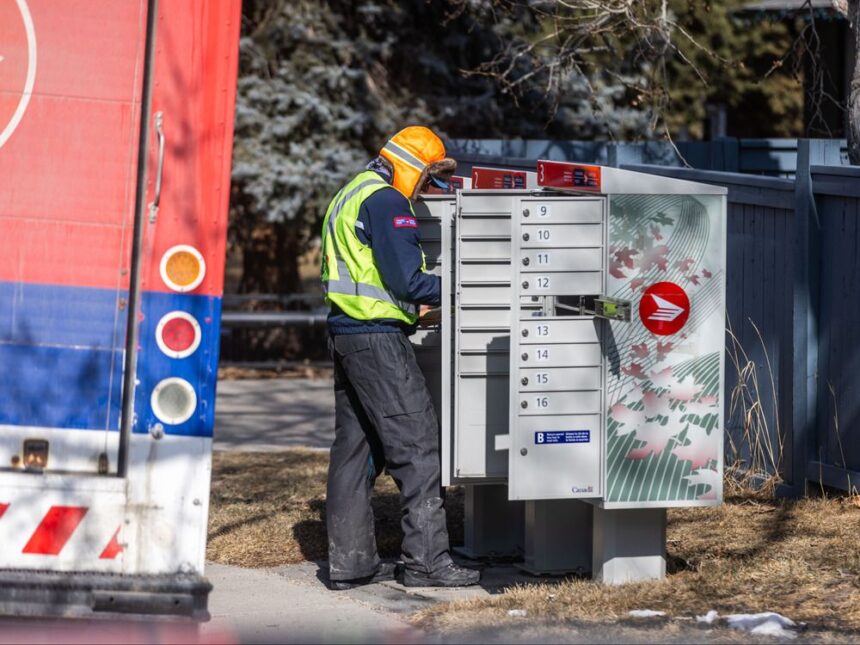Article – As Canada’s rural postal network narrowly avoided service disruptions through a tentative deal Sunday, urban mail carriers remain without a contract, leaving millions of Canadians wondering if their mail service faces imminent disruption.
The Canadian Postmasters and Assistants Association (CPAA), representing nearly 5,500 rural post offices, reached an eleventh-hour agreement with Canada Post after months of tense negotiations. The deal came just as strike notices were set to take effect, potentially shuttering rural postal outlets across the country.
“While this agreement represents progress for our rural members, the broader Canada Post network remains in a precarious position,” said Shari Hinton-Robertson, CPAA Vice President, in a statement following the marathon bargaining session. “Our rural postmasters have secured important workplace protections, but we recognize this is just one piece of the national postal service puzzle.”
The tentative agreement, which requires ratification from union membership, addresses key sticking points including workload concerns, health and safety standards, and wage adjustments to reflect the rising cost of living affecting rural communities.
Behind the scenes, sources familiar with the negotiations described a fraught process that nearly collapsed several times over the weekend. One senior negotiator, speaking on condition of anonymity, revealed that “provincial representatives were preparing strike protocols as late as Saturday night” before the breakthrough occurred.
Meanwhile, the Canadian Union of Postal Workers (CUPW), representing approximately 50,000 urban postal workers, continues negotiating with the Crown corporation. Their contract expired in December 2023, and tensions have escalated as workers report increasing delivery volumes while staffing levels remain static.
Jean-Philippe Martin, a postal worker in Montreal’s Plateau neighborhood for 14 years, describes the changing reality of mail delivery: “We’re carrying more packages than ever before because of online shopping, but we haven’t seen corresponding increases in support or compensation. Something has to give.”
The dual negotiations highlight the complex nature of Canada’s postal system, which serves both densely populated urban centers and remote rural communities through different operational models and separate collective agreements.
Parliamentary Budget Officer Yves Giroux noted in his March fiscal analysis that Canada Post has faced mounting financial challenges, with letter mail volumes declining by nearly 40% since 2006, while parcel delivery – more labor-intensive and competitive – has seen dramatic growth.
“The corporation is caught between its mandate as an essential service provider and the economic realities of the modern postal marketplace,” Giroux wrote. “Modernization efforts are essential, but must balance fiscal responsibility with service reliability.”
For small businesses like Lakeside Crafts in rural Nova Scotia, which ships handmade items nationwide, the uncertainty remains concerning despite the CPAA agreement.
“We were relieved to hear about the rural post office deal, but most of our packages travel through the urban network too,” explained owner Margaret Whittaker. “A strike would be devastating for us during the summer tourist season when our online sales typically peak.”
The dual-pronged labor situation has raised questions about Canada Post’s longer-term sustainability model. Professor Émilie Bouchard, who specializes in public sector labor relations at Carleton University, believes these negotiations reveal deeper structural challenges.
“What we’re witnessing isn’t simply about wages or benefits – it’s about how an essential public service adapts to changing economic realities while meeting its obligations to both workers and the public,” Bouchard said. “The rural agreement is promising, but the urban contract represents the bulk of Canada Post’s workforce and operations.”
Federal Labour Minister Seamus O’Regan has urged both sides in the ongoing CUPW negotiations to reach an agreement, emphasizing the essential nature of postal services to Canadians.
“While I’m encouraged by the progress with rural postmasters, we recognize that Canadians depend on reliable mail service across the entire network,” O’Regan said in a statement Monday. “The federal government continues to monitor the situation closely.”
The potential for disruption comes at a challenging time for many Canadians already facing economic pressures. Census data shows that approximately 41% of Canadians still prefer to receive government communications and financial documents through physical mail, making any service interruption particularly impactful for vulnerable populations.
Community advocates like Teresa Wilson, who works with seniors in Winnipeg, expressed concern about potential impacts. “Many of our clients rely exclusively on paper mail for pension checks, prescription deliveries, and staying connected with family. Digital alternatives simply aren’t viable options for everyone.”
As CUPW and Canada Post continue negotiations this week, both sides have remained tight-lipped about specific sticking points. Industry analysts suggest that work-life balance protections, forced overtime provisions, and the increasing use of temporary workers likely remain contentious issues.
For now, mail continues to move through Canada’s postal network, but the clock is ticking on negotiations that could determine whether letters and packages keep flowing through summer and beyond.






